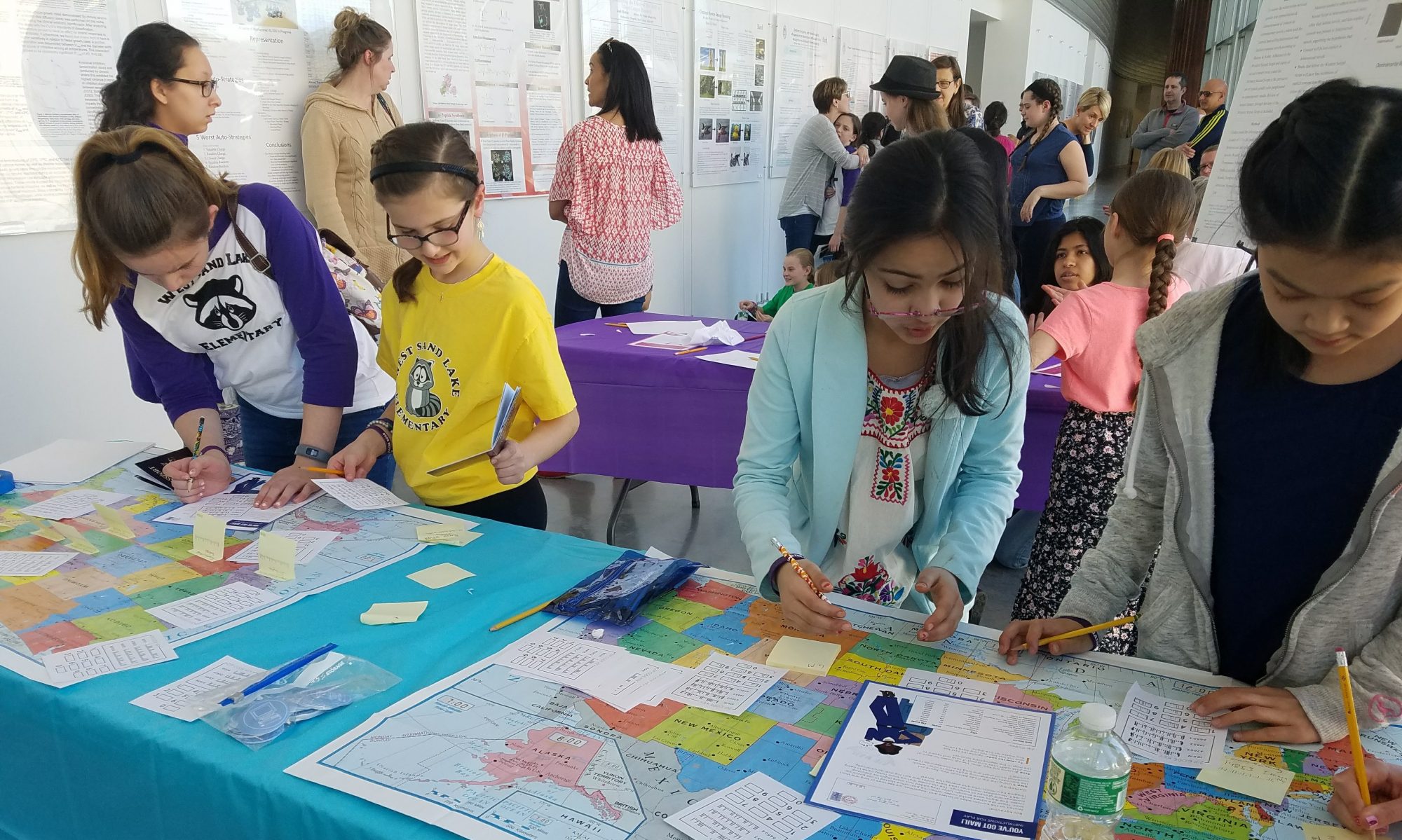Time passes remarkably quickly when each day is fulfilling. It is already Day 3 at CAMP. After some anxiety over the storm yesterday, our fantastic team felt recharged and ready for some more math, CS, and our CAMPers’ inimitable creativity.
- Uniting Communities: Long before our daily start time of 9:00 AM, our coordinator, Felicia Flores, started receiving emails from parents. Many CAMP families were still experiencing power and internet outages due to Hurricane Isaias.
Shaylen from Hopewell, NY, told us that he had to work from the passenger seat of his family’s car and from Panera, sitting outside in the heat. Nonetheless, he missed his classmates from the COT group. Several more students, such as Eamon from the SIN group, worked from their neighbors’ backyards or houses. We were impressed with CAMPer’s commitment to continue learning and felt rewarded for our decision to keep the program running online this summer.

Even though we managed to keep all the classes running yesterday, some students were unable to join us. They asked us for notes of the courses they missed and were eager to catch up on work. Starting on Day 2, our instructors began putting in extra hours to summarize and upload notes for classes to CAMP’s shared Google Drive.

- Live Interactive: With the CSC group at 11:00 AM, senior instructor Frances Stern hosted her math class. Today, we discussed the period of Caesar cipher keys and the multiplication cipher with key 3. Recall that when we were studying the Caesar cipher with a shift of 13 (ROT-13), we realized that if we applied the change twice, we returned to the original plaintext. A “period” of the function thus means the numbers of repetitions we need to return to the original message. What if we try to decide the period of each of the possible Caesar cipher keys?
When I dropped-in for Frances’ class, her students were enthusiastically raising hands. CAMPers proposed their answers for each of the Caesar cipher keys, explaining how they got their answers. Soon, the group moved to the multiplicative cipher with key 3. CAMPers encrypted the individual letters to cipher text. When Raphaela was asked how she got the answer for the letter s (18), her classmate Isa chimed in and helped her explain.

A highly engaging classroom environment is inseparable from our instructors’ teaching philosophy. Through communicating with parents on a daily basis, CAMP wants to ensure that students keep their cameras open during class time. To increase the attention span of students, we also fit in a break period between each class.
Frances, who has published two books on doing math with kids (please link this to: https://www.talkaboutmath.
“All children can learn and enjoy mathematics if they are engaged at a level appropriate to their understanding and knowledge with the purpose of helping them to build upon these. They like to know why they are learning a topic, so starting with an interesting problem – something they do not know how to solve – and allowing them to find solutions engages them creatively while demonstrating the “why.” That can be followed with practice – questions – to gain fluency and efficiency.”

- Advanced Math in Programing: Next stop is the CS classroom, students were facing some new challenges. Remember that we made a Caesar cipher with the Python language yesterday? Today, CAMP upped our game with encoding matrices as lists, performing matrix multiplication, and operating on column vectors. Since most CAMPers have not learned about matrices at school, instructor Matt Goehrig opened his class by introducing students to the mathematical concept.
- Art and Cryptography: In the art classroom today, instructors Tiffany and Chelsea let students explore abstract art cipher in physical, or digital settings with Pixel studio. CAMPer made a pictorial alphabet using graph paper or the app. Using their unique visual alphabet, CAMPers will then create an artwork containing a secret message.


See you again soon.
For more updates: follow us on Facebook (https://www.facebook.com/



































